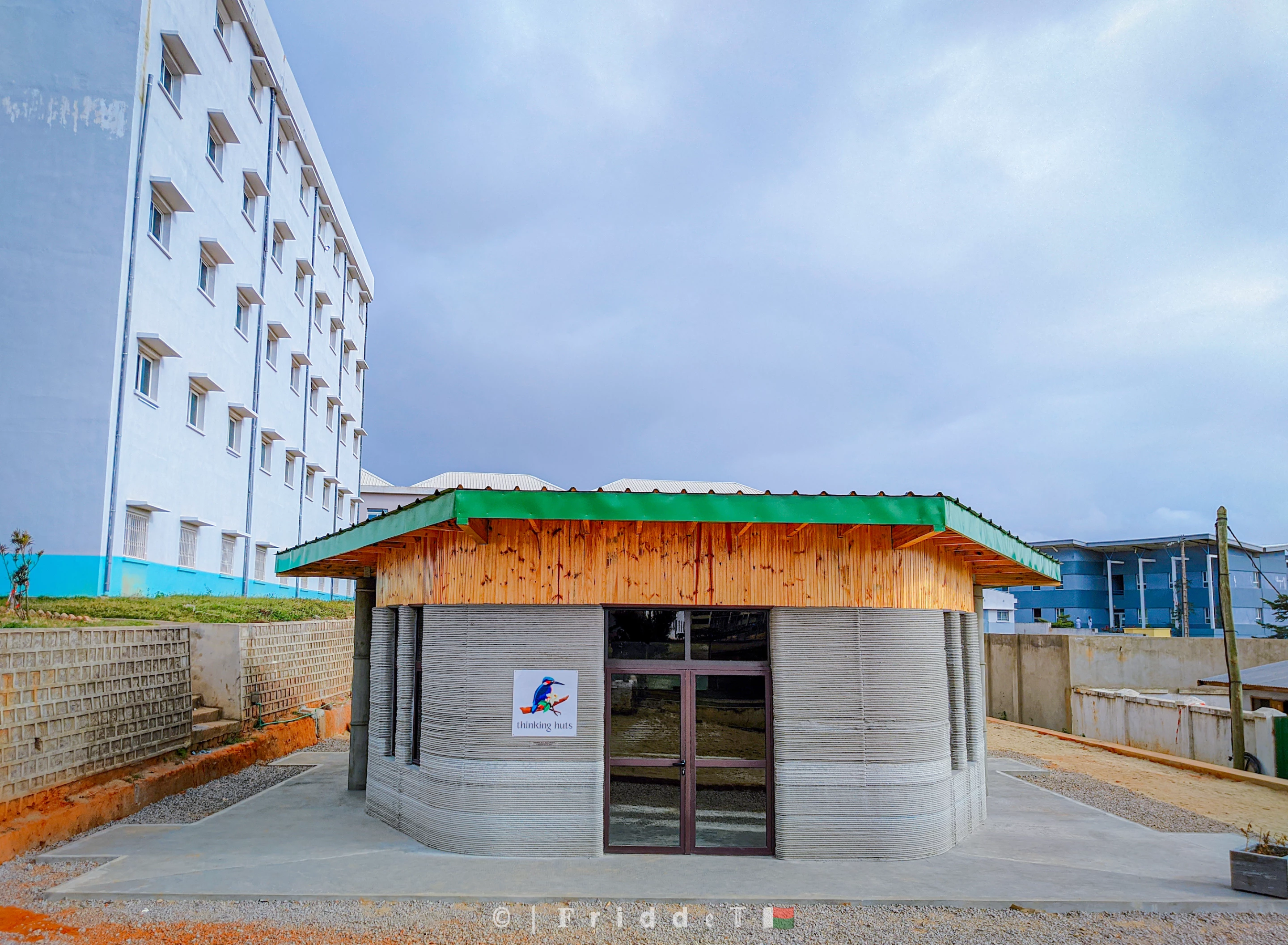There's a serious school shortage in Madagascar. According to non-profit Thinking Huts, the country needs around 22,000 new schools to tackle overcrowding and long distances currently traveled by students. To try and address this issue, the organization has created the first in a planned series of 3D-printed schools.
This initial 3D-printed school is named Bougainvillea and is located in Fianarantsoa, a city in south central Madagascar. It was originally planned to be the world's first 3D-printed school, though another school in Malawi ended up beating it to the punch.
The project has undergone a few changes since we last reported on it and no longer features solar panels or rainwater collection (though these might be added in later iterations if required), while its planned corrugated metal roof has also been swapped for a roof made from wood.
Its basic honeycomb form remains, however, and the building consists of a simple single-story interior that measures roughly 700 sq ft (65 sq m) and hosts approximately 30 students.

The construction process was much like previous 3D-printed architecture projects we've covered and involved a 3D printer extruding a cement-like mixture out of a nozzle in a pattern to build up the basic walls during a process which took 18 hours.
Madagascan builders then finished it off themselves by adding a roof, door and windows, which were all made locally, as well installing as any furniture needed. Including the work of the human builders, the project took three weeks to complete.

Looking to the future, Thinking Huts aims to scale up this first school and build more where they are needed throughout Madagascar – eventually perhaps even elsewhere in the world. The project was created in collaboration with 14Trees (which also created the school in Malawi already mentioned above), the university Ecole de Management et d'Innovation Technologique, and Bruno Silva and Yash Mehta of Defining Humanity.
"Hut v1.0 ('Bougainvillea') will be replicated in both urban and rural locations where the need is greatest as Thinking Huts localizes the design based on community feedback and environmental considerations," said Thinking Huts. "Scaled honeycomb campuses of multiple connecting Huts are next on the roadmap. Drawing inspiration from the beehive, it symbolizes bringing together people to form a community that only thrives if everyone works towards a shared mission. 3D printing allows for a reduction of construction waste and time."
Source: Thinking Huts






